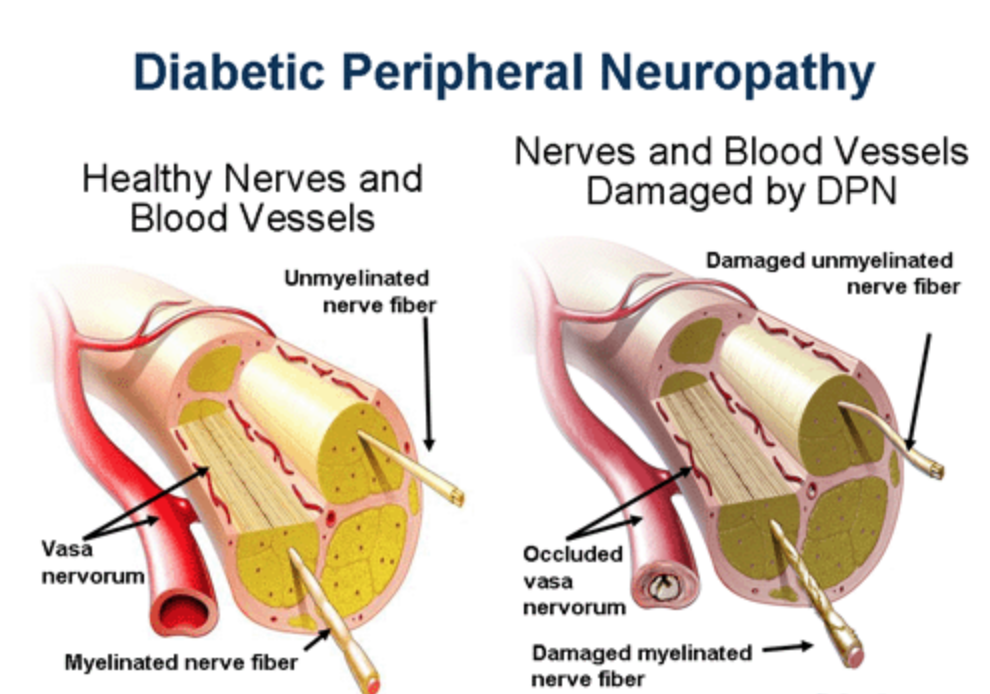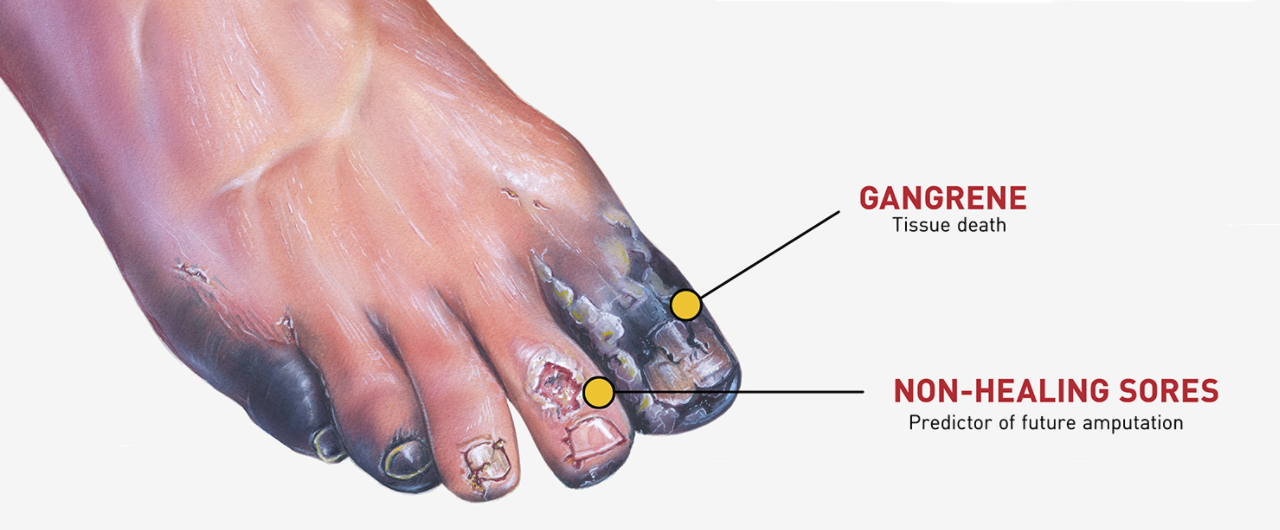What is Diabetic Neuropathy?
Approximately 50% of people with diabetes suffer from diabetic neuropathy. Diabetic neuropathy is a type of nerve damage that occurs due to diabetes. Over time, high or poorly controlled blood-sugar levels damage blood vessels throughout the body by weakening the walls of the small blood vessels. These blood vessels are crucial for supplying the nerves with oxygen and nutrients. Nerve fibers are extremely vulnerable to damage from high blood sugar levels because they rely on tiny blood vessels for oxygen and nutrients. When the blood vessels become damaged, the nerve loses its vital resources and begins to die. This nerve damage leads to major problems as healthy nerves are critical to relay information to the brain about pain, temperature, touch, and movement. Diabetic neuropathy typically affects the legs and feet but neuropathy may occur anywhere such as the hands or arms.

Symptoms of Diabetic Neuropathy
- Sensitivity to touch
- Difficulty with coordination
- Numbness or pain in your hands or feet
- Loss of sense of touch
- Muscle weakness
- Balance Issues
- Burning sensation in your hands or feet
- Tingling sensation in your hands or feet
- Excessive or decreased sweating
- Vision trouble, such as double vision
- Nausea, indigestion, or vomiting

The symptoms of diabetic neuropathy vary depending on the type of nerve affected as well as the severity of the damage. For some, diabetic neuropathy is extremely painful while for others the condition may cause numbness and a loss of sensation in specific areas. This condition is progressive, meaning it develops and worsens slowly over time as the nerve damage spreads and the nerve continues to die. For some, this condition becomes debilitating as the neuropathy progresses they can no longer work, drive, or even walk.
Complications of Diabetic Neuropathy
A common complication of diabetic neuropathy is a loss of sensation in the hands or feet. This loss of sensation can lead to an inability to feel cuts or sores, which may result in an infection. Infections left untreated or unnoticed may cause the tissues to become necrotic, resulting in gangrene and eventually amputation. While some people are forced to undergo amputation because of infection complications, others choose to have a limb amputated because they feel they have run out of management options and they believe severing the limb completely will put an end to their suffering. Unfortunately, this is not always the case as many people experience what is known as Phantom Limb Pain following an amputation.

Management and Treatment of Diabetic Neuropathy
For some living with this condition becomes more about management than treatment. Some people with diabetic neuropathy rely on progressively increasing doses of anti-convulsion medications like Gabapentin (Neurontin) and Lyrica to ease the pain of the condition. Other conventional treatment for diabetic neuropathy includes antidepressant medications, topical creams, and physical therapy. Conventional treatment for diabetic neuropathy aims to ease the uncomfortable symptoms of the condition rather than to address and treat the cause of the neuropathy itself. At Abundant Life Health Center, we help our patients to address the root cause of their diabetic neuropathy using revolutionary technology to reverse nerve damage. We work with our patients to identify the type of nerve damage that has occurred and target the blood vessels and nerves, to regenerate the dying and damaged nerve. Contact our office to see if you are a candidate for our innovative diabetic neuropathy treatment.




